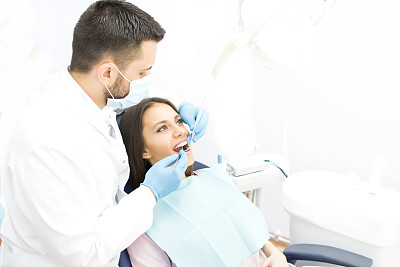The Essential Guide to Safely Extracting a Tooth During Dental Emergency Situations
Summary: Dental emergencies can arise unexpectedly, and the necessity to extract a tooth safely is a critical skill. This guide covers essential techniques and precautions that you can take during such situations to ensure minimal discomfort and proper health management. We will explore recognizing when extraction is necessary, preparing the necessary tools and environment, the extraction process itself, and post-extraction care. Each section is designed to equip you with the knowledge needed for effective tooth extraction while focusing on safety and hygiene. By the end of this guide, you will have a clearer understanding of managing dental emergencies independently.
1. Recognizing When Tooth Extraction Is Necessary

Understanding when a tooth requires extraction is vital in emergency situations. Common indications include severe decay, infection, or injury that compromises the tooths integrity. If the tooth is causing significant pain and there are no other treatment options available, extraction might be the best solution.
Another factor to consider is the presence of swelling or a fever, which could indicate an infection that has spread beyond the tooth. In such cases, delaying extraction could lead to further complications, making it imperative to act quickly. Always assess the situation thoroughly before making a decision.
Finally, consult any medical or dental records if available. A previous consultation may lead you to safer, more effective approaches than attempting extraction alone. Understanding these signs will help you determine urgency in a dental emergency.
2. Preparing for the Extraction Procedure
Preparation is crucial when it comes to tooth extraction during an emergency. First, gather the necessary supplies, which should include gloves, sterile dental tools (like forceps), gauze, antiseptic solution, and an appropriate anesthetic. This equipment will help ensure a hygienic and effective extraction process.
Next, create a clean environment to conduct the extraction. Choose a well-lit space, ideally with access to a sink for sanitation. Ensure that the area is free from contaminants, and always wear gloves to minimize the risk of infection. Sanitize instruments before use to prevent introducing bacteria into the mouth.
Lastly, ensure you have a trusted assistant if possible. Having someone by your side can help manage the procedure more efficiently, as they can provide materials, support, or even comfort in what can be a stressful situation.
3. The Extraction Process Explained
The actual process of tooth extraction can be broken down into several steps. Begin by administering anesthetic where applicable. This will help numb the area around the tooth and make the procedure more comfortable for the patient.
Next, use calibrated forceps to grasp the tooth firmly. Its important to employ a rocking motion as you apply pressure, which aids in loosening the tooth from its socket. Be patient during this process, as forceful pulling can lead to fractures in surrounding teeth or bone.
Once detached, the tooth should be gently removed, and any remaining roots should also be extracted to prevent future complications. After the extraction, use gauze to control bleeding, applying pressure for about 30 minutes. This not only helps with blood loss but also speeds up the clotting process.
4. Post-Extraction Care and Management
After successfully extracting the tooth, adequate post-operative care is vital to promote healing and prevent complications. The patient should be advised to rest and avoid strenuous activity for at least 24 hours after the procedure. This can help mitigate bleeding and encourage recovery.
Additionally, managing pain and swelling is essential. Over-the-counter painkillers can be recommended, along with ice packs to mitigate inflammation. Patients should be encouraged to avoid smoking and consuming hot food or drinks within the first 24 hours to support healing.
Finally, its crucial to schedule a follow-up appointment with a dentist to monitor healing and discuss potential restorative options for the area where the tooth was extracted. Ensuring the extraction site is healing properly is paramount for overall dental health.
Summary:
In a dental emergency, understanding when extraction is necessary, preparing appropriately, performing the extraction safely, and managing post-operative care is crucial. Following these guidelines can help ensure that the process is conducted as painlessly and efficiently as possible.
This article is compiled by Vickong Dental and the content is for reference only.


